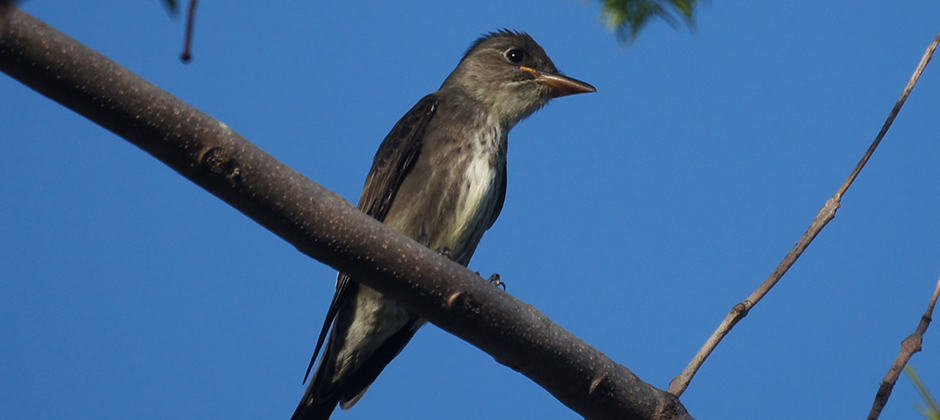Share this article
Warming climate pushes California birds upslope
Over just the past 15 years, migratory passerine songbirds that breed in California have already shifted their range to higher elevations in response to a warming climate, researchers found.
“Working for a state agency, we’re really interested in applied research, so we need information over large spatial extents for many species over long time periods to really help us to inform conservation and management,” said Brett Furnas, a senior environmental scientist with the California Department of Fish and Wildlife’s Wildlife Investigations Laboratory. Furnas, a TWS member, is the sole author of the study published in Biological Conservation.
In the study, Furnas collected data to determine where neotropical migratory bird species have bred over the last 15 years throughout 40% of conifer forests in California. To estimate the probability of bird species occupying different areas, Furnas’s team hiked into the forest and set up sound recorders in the spring and early summer to capture morning calls by passerines to advertise territories and attract mates.
Experts listened to the recordings and took note of the species present during five-minute periods for each year. “It has been time-consuming work, but machine learning is starting to make the task easier and quicker,” Furnas said.
Furnas found species declined in lower elevations and moved uphill, where they found themselves competing for limited terrain. “If you think of mountains as a triangle, as you move up, there’s less area to squeeze all the birds in,” he said. Furnas found winners and losers amid climate change in California. The olive-side flycatchers (Contopus cooperi) were among the losers, moving to higher elevations and dropping in number. It’s likely that their long migration exhausted them, making it harder to cope with warmer weather, search for food at higher altitudes and reproduce, he said.
Neotropical migrant birds have to travel a long way, Furnas said, flying from as far as Mexico and Central and South America. “They’re shifting upslope to compensate for climate but are not doing well, with decreasing numbers among the most vulnerable species.”
Other species, like the Townsend’s solitaire (Myadestes townsendi), were increasing with the expansion of western juniper over the past century and were less likely to shift upward. And overall, the research showed an increase in species richness, suggesting some overall resilience, he said.
“This gives us a really good example of specific winners and losers for informing which birds my department should be concerned about,” he said.
Header Image: The olive-sided flycatcher moved to higher elevations with a warming climate, but their populations are dropping. ©Mike’s Birds








